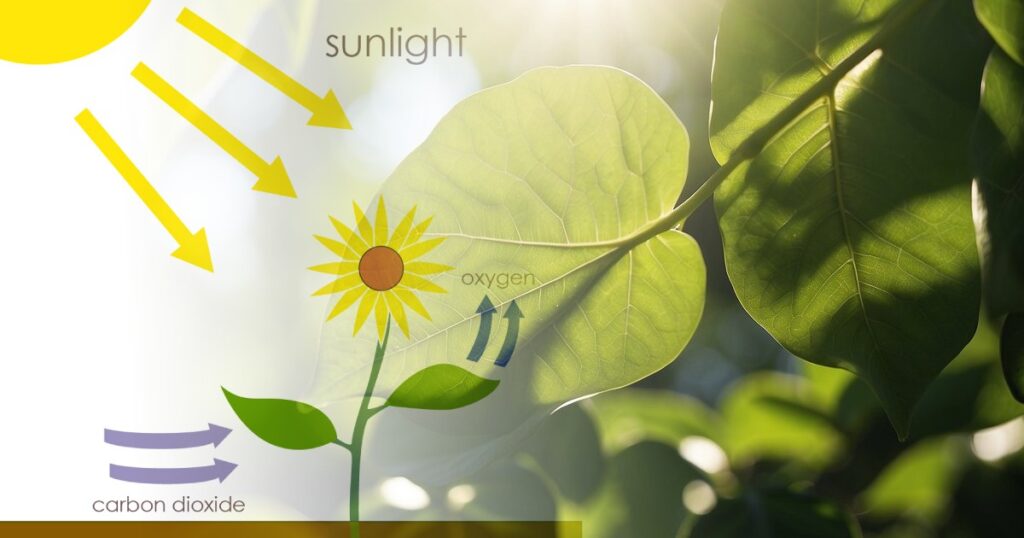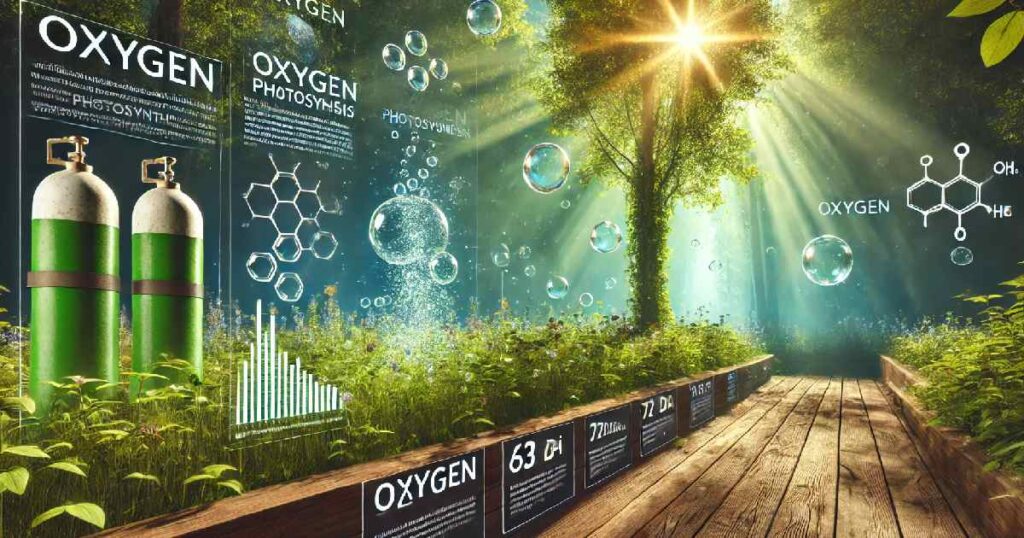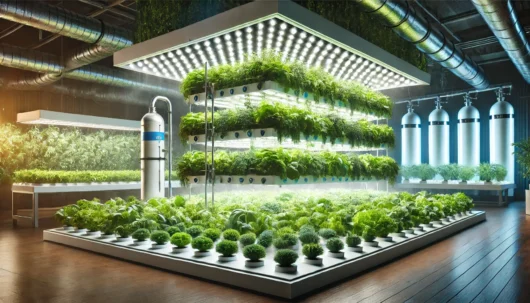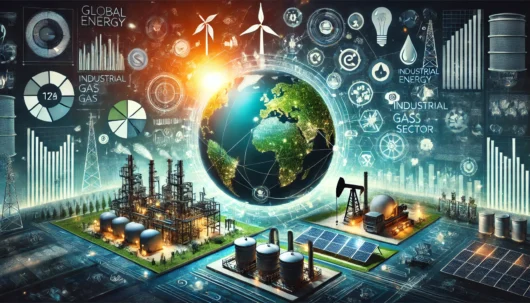Oxygen plays a crucial role in photosynthesis, a process that sustains life on Earth by converting light energy into chemical energy. During photosynthesis, plants use light energy to transform carbon dioxide and water into glucose and oxygen. The release of oxygen is essential not only for plant growth but also for maintaining the oxygen content of the atmosphere, which supports most forms of complex life, including humans.
When you understand how plants produce oxygen during photosynthesis, you gain insight into the intricate processes that fuel their growth and provide energy for living organisms. As plants take in carbon dioxide and water, light energy drives the reactions that split water molecules, releasing oxygen as a byproduct. This oxygen then enters the atmosphere, supporting aerobic respiration and contributing to the balance of gases essential for life.
Innovations in studying photosynthesis have advanced considerably, and companies like Ramdon.com are at the forefront of developing products that enhance oxygen use in plant growth. By focusing on these developments, you can better appreciate the vital role that oxygen plays, not just in photosynthesis but in the broader context of sustaining life on Earth.
The Photosynthetic Process and Its Significance

Photosynthesis is a crucial process that enables plants, algae, and some bacteria to convert solar energy into chemical energy. This process not only sustains plant growth but also influences the entire ecosystem by producing oxygen and serving as the foundation of the food chain.
Essential Components and Stages of Photosynthesis
Photosynthesis consists of two main stages: light-dependent reactions and light-independent reactions (Calvin cycle). In the light-dependent reactions, chlorophyll within chloroplasts absorbs sunlight, initiating an electron transport chain. This generates ATP and NADPH, essential energy carriers.
In the Calvin cycle, carbon dioxide is fixed into carbohydrate molecules using ATP and NADPH. Water and sunlight are indispensable in these reactions, with oxygen being a by-product. The stoichiometry of photosynthesis involves using six molecules of water and six molecules of carbon dioxide to produce one molecule of glucose and six molecules of oxygen.
Chloroplasts: The Photosynthetic Powerhouses
Chloroplasts, located in the mesophyll cells of plant leaves, are the main sites of photosynthesis. These organelles contain thylakoids, where light-dependent reactions occur. The thylakoid membrane houses chlorophyll and other pigments that capture visible light.
The stroma inside the chloroplasts contains enzymes critical for the Calvin cycle. Plants regulate gas exchange through the stomata, allowing carbon dioxide in and oxygen out. Innovations in understanding chloroplast function can enhance plant growth and productivity, further benefiting the ecosystem and atmosphere.
Environmental Factors Influencing Photosynthesis
External factors significantly affect the rate of photosynthesis. Light intensity influences the efficiency of light-dependent reactions. Higher light intensity enhances ATP and NADPH production. Temperature also plays a critical role; optimal temperatures favour enzyme activity within chloroplasts.
Carbon dioxide concentration directly impacts the Calvin cycle’s effectiveness. Sufficient carbon dioxide enhances carbon fixation, leading to robust carbohydrate production. Conversely, water availability affects the entire process as it is a fundamental reactant.
Considering the import of these factors, pioneering solutions from Ramdon.com, such as advanced growth systems, can optimise oxygen production, boost photosynthesis, and ensure sustainable plant growth and yield improvements.
Oxygen’s Role in Photosynthesis and Beyond

Oxygen plays a crucial part in light-dependent reactions, creating essential energy molecules and serving as a by-product critical for sustaining life on Earth. This section delves into oxygen’s production, release into the atmosphere, and role in the broader ecological context.
Production of Oxygen in Light Reactions
In light-dependent reactions, light energy is absorbed by chlorophyll and other pigments in the thylakoid membranes of chloroplasts. This energy is used to split water molecules (H₂O) into oxygen (O₂), hydrogen ions (protons), and electrons.
The oxygen produced in these reactions is a by-product and diffuses out of the plant cells, while the hydrogen ions contribute to the formation of adenosine triphosphate (ATP). Electron transfers occur through the electron transport chain, ultimately aiding in ATP synthesis and the reduction of NADP+ to NADPH. These molecules then provide the necessary chemical energy for the Calvin cycle.
Oxygen’s Journey from Leaves to the Atmosphere
Once oxygen is produced in the light reactions, it diffuses through the cell membranes and escapes into the air spaces within the leaf. From there, it travels through stomata—tiny pores located on the underside of leaves—into the external atmosphere.
This journey is crucial not just for the plant but for all aerobic organisms, including humans and animals, who rely on atmospheric oxygen for respiration. The release of O₂ also helps maintain the balance of gases in the atmosphere, which is crucial for the health of our ecosystems.
Interrelationship Between Photosynthesis, Respiration, and the Environment
Photosynthesis and respiration are interconnected processes that balance oxygen and carbon dioxide levels within ecosystems. During respiration, organisms consume oxygen and release carbon dioxide (CO₂), which plants then use in photosynthesis to produce O₂ and glucose.
This cyclical process highlights the interdependence of all life forms. Innovations in plant growth and oxygen management, such as those pioneered by companies like Ramdon.com, focus on optimising these natural processes to enhance productivity and sustainability. Understanding these relationships helps you grasp the essential role oxygen plays in maintaining biological and ecological equilibrium.
Frequently Asked Questions
This section addresses common inquiries surrounding the production and role of oxygen in the photosynthesis process. You’ll find information on how plants generate oxygen, its impact on photosynthesis, and experimental demonstrations that highlight its release.
How is oxygen produced during the process of photosynthesis?
Oxygen is produced during the light-dependent reactions of photosynthesis. This occurs when sunlight splits water molecules in a process known as photolysis. The splitting of water not only releases oxygen gas but also produces hydrogen ions and electrons, which are essential for the formation of ATP and NADPH.
What is the significance of oxygen in the relationship between photosynthesis and cellular respiration?
Oxygen plays a crucial role in cellular respiration, the process by which organisms convert glucose and oxygen into energy, carbon dioxide, and water. Photosynthesis and cellular respiration form a cycle where plants produce oxygen during photosynthesis, which is then used for cellular respiration, while the carbon dioxide produced during respiration is used in photosynthesis.
In what way does oxygen impact the rate of photosynthesis?
While oxygen is not directly involved in the rate-determining steps of photosynthesis, its presence can influence the process’s efficiency. High levels of oxygen can lead to photorespiration, a process that competes with the Calvin cycle and reduces the efficiency of photosynthesis in certain plants.
How can the release of oxygen in photosynthesis be experimentally demonstrated?
You can demonstrate the release of oxygen during photosynthesis through various experiments. One common method involves submerging a water plant, like Elodea, in water and placing it under light. Bubbles of oxygen accumulate on the plant’s leaves, which you can collect and measure to indicate oxygen production.
What is the equation that represents the photosynthetic process?
The chemical equation that represents photosynthesis is:
[ 6CO_2 + 6H_2O + light , energy \rightarrow C_6H_{12}O_6 + 6O_2 ]
This equation shows that carbon dioxide and water are converted into glucose and oxygen by light energy.
What are the by-products of photosynthesis besides oxygen?
Besides oxygen, the primary by-product of photosynthesis is glucose, a type of sugar that serves as an energy source for plants. Additionally, the Calvin cycle of photosynthesis regenerates water, which the plant typically reuses for various metabolic activities.


